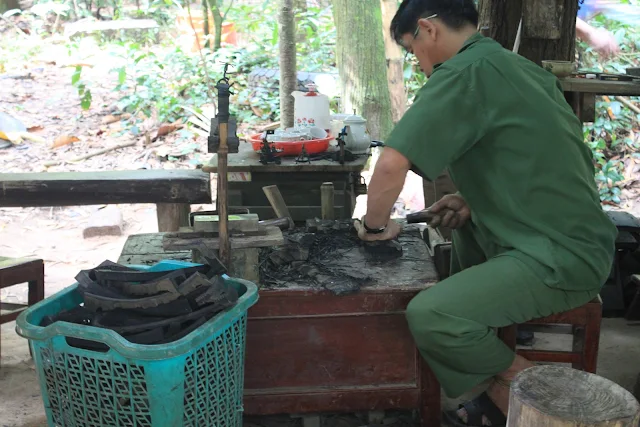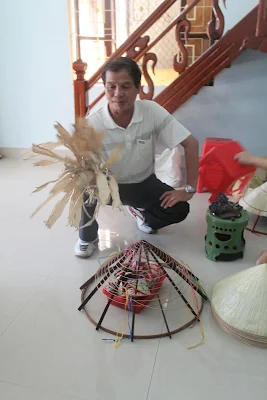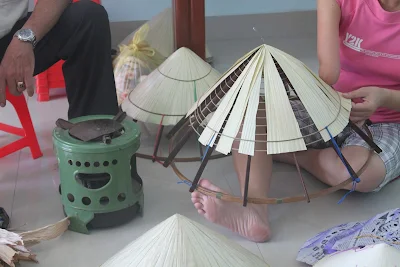The continuing hype is that Charlie Chaplin and Brad Pitt brought their beloved wives here, but it is true. The reality is an elegant and inspiring step back into the colonial past - in architecture, ambiance and arresting captivation. The experience is one of refined service, spacious environs and a touch of class. There is an airiness in here that sets it definitely apart from the other parts of Ha Noi. French can be heard spoken in several conversations, as you sit on the lobby's Euro furniture, soaking in both the historical and present day ambiance or just waiting for your friends who are residing in the Metropole Hotel.
Above, noodles served in fine bone china complementing the the green house surroundings of the tea room at the Spices Garden, garnished by a variety of local musts - basil leaves, chili cuts, capsicum, onion slices and chicken. Mrs Nguyen Thanh Van is currently the head chef presiding over three kitchens - and also serving the Angelina Restaurant & lounge, together with the Le Beaulieu Restaurant.
The underlying and over flowing theme is in white (pictures above and below), whether you view the rooms, with balconies and facade green window louvres, from outside, or when you look up from a dining or drinking table. The Metropole has existed since 1901 and witnessed the various significant events and transitions in Vietnamese history of the 20th century. Located in the Hoan Kiem District of the city centre, it is only a walk away from the Opera House and the Government Guest House (formerly the official residence of the colonial French Governor).
Well placed ceiling fans, exquisite touches of local pottery, cantilevered wooden windows, silk fabric cushions, dark wood paneling and French styled furniture (photo above) all help to build up a snug and comfortable feel even in the lobby itself. Wrought iron is embellished to create a contrast with the comfortable soft hues and provide assurances of stability and strength. Ecological designed materials are used in the guest rooms, villas or suites, which stand out graced with lush curtains, pillow accessories and chateau-like colours.
There are lush green lawns maintained in the inner courtyards of the hotel. With 22 suites and 364 rooms, three separate bars, an outdoor heated pool and a rooftop garden, it does offer many choices.
Romance and business seem to be the two key selling points of the Metropole, in that they offer to guests the high standards required by both. The buildings have not always been in such a glorious state, having been left run down between 1954 and 1986, but now the Grand Old Dame is back in all its glory.
The La Terrasse Du Metropole (photo below) suits cool evenings and Parisian-inspired preferences for easy and informal meet ups. My own experience of eating at the Spice Gardens is one of quick and friendly service, all wrapped in a professionally trained manner and one that offers a realm of comfort and relaxation.









































